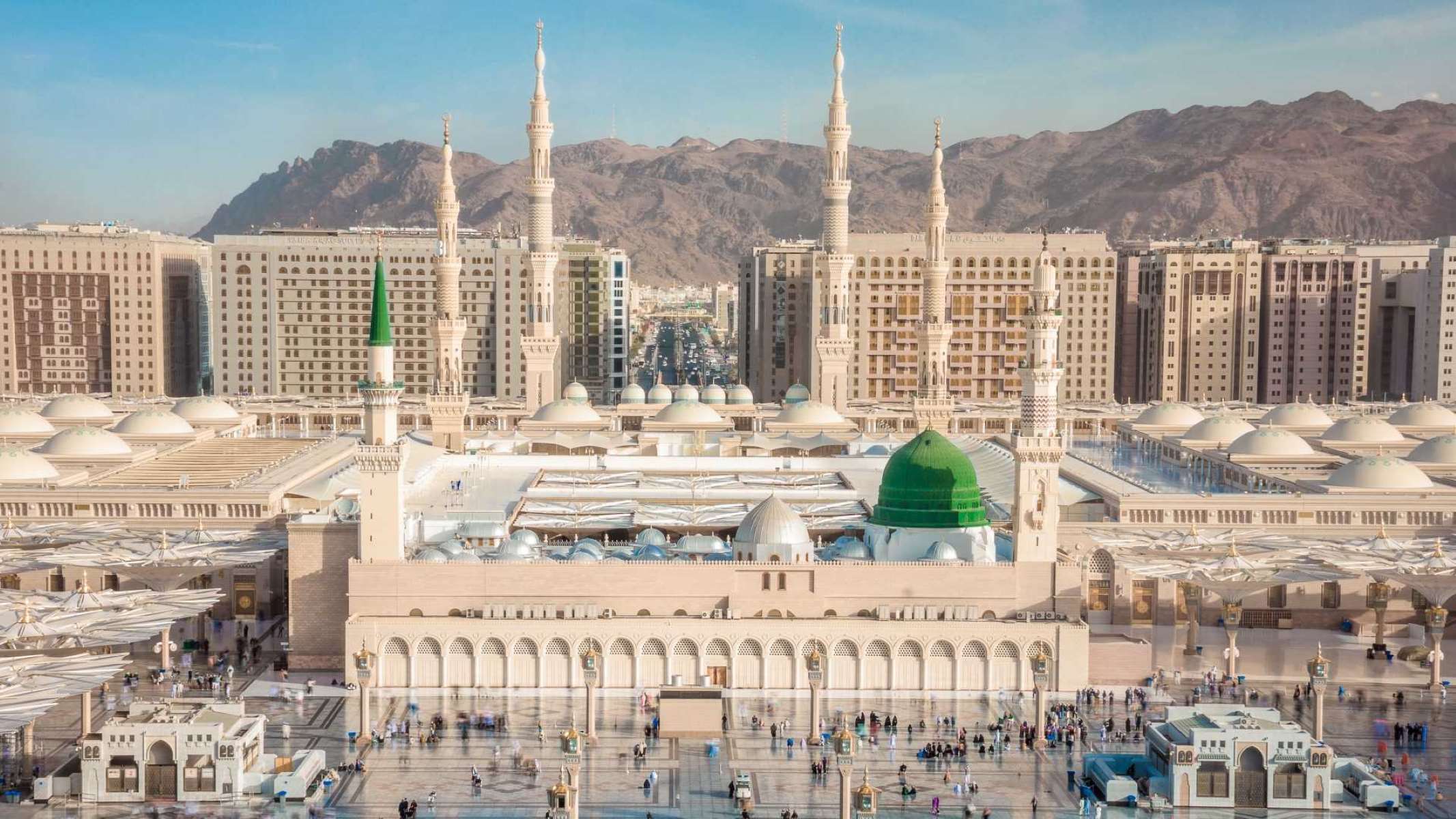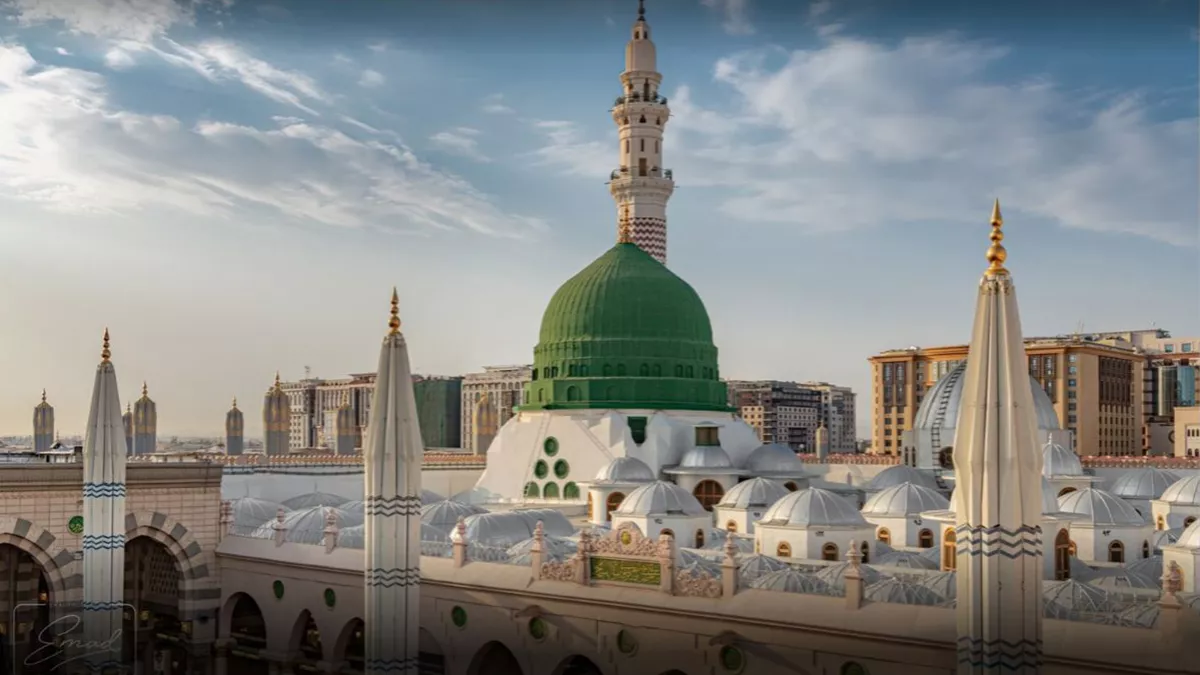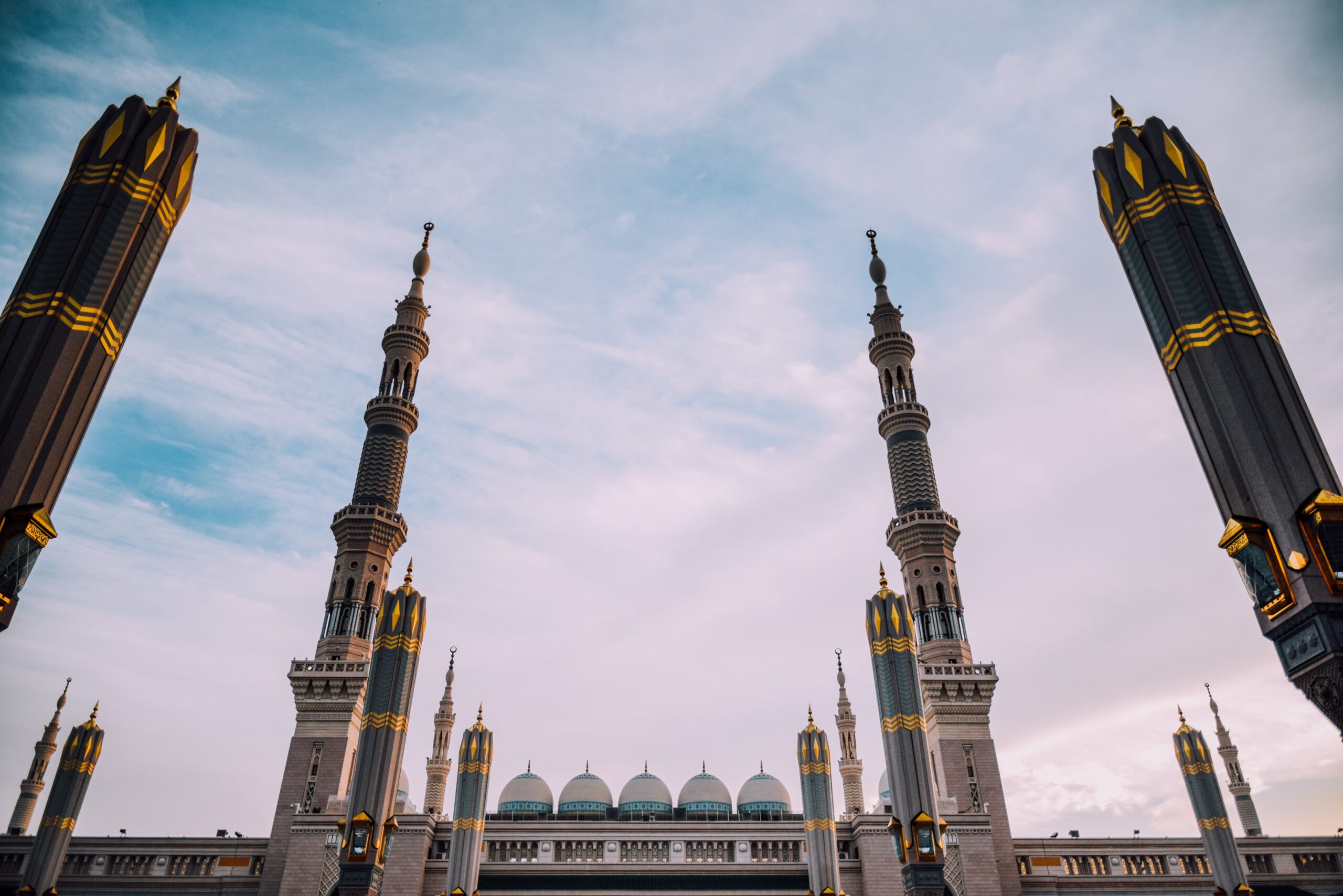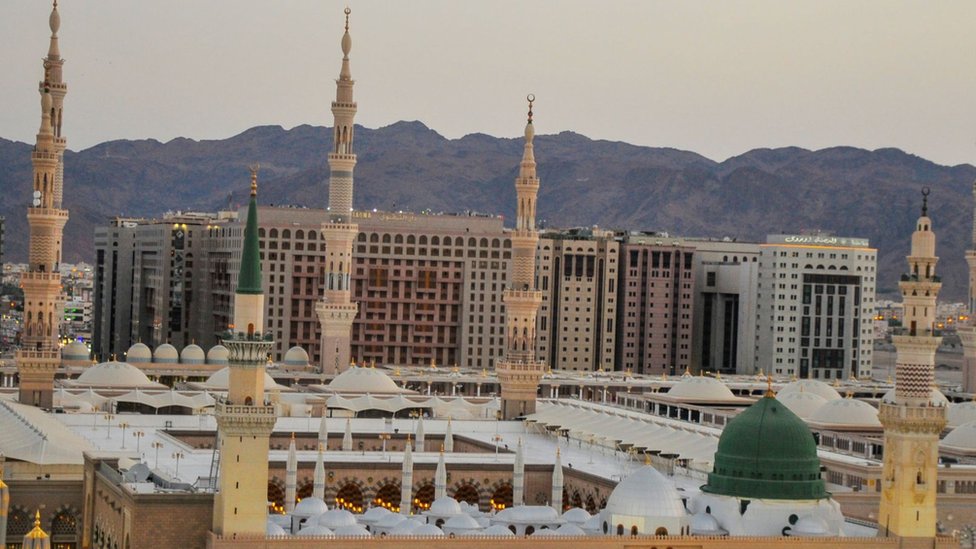In This Article
ToggleMasjid an-Nabawi, also known as the Prophet’s Mosque, is one of the most significant and revered sites in the Islamic world. Located in the holy city of Medina in Saudi Arabia, this mosque is second only to the Masjid al-Haram in Mecca in terms of religious importance for Muslims. It is a place of deep spiritual significance, not only because it houses the tomb of the Prophet Muhammad (PBUH) but also due to its historical, architectural, and cultural relevance.
Historical Significance Masjid an-Nabawi

Masjid an-Nabawi holds a profound place in Islamic history. The mosque was originally built by the Prophet Muhammad himself in the year 622 AD, shortly after his migration (Hijrah) from Mecca to Medina. This migration marks the beginning of the Islamic calendar, and the construction of the mosque symbolized the establishment of the first Muslim community.
The original structure was modest, with walls made of mud bricks and a roof supported by palm trunks. Over time, as the Muslim community grew, so did the mosque. The Prophet Muhammad personally participated in the construction and expansion of the mosque, making it a central place for prayer, community gatherings, and the administration of the nascent Islamic state.
Architectural Evolution
Masjid an-Nabawi has undergone numerous expansions and renovations over the centuries, reflecting the growth and prosperity of the Muslim community. The mosque’s architecture has evolved from a simple, functional space into a grand and ornate structure that showcases the finest elements of Islamic art and architecture.
One of the most significant expansions was carried out during the reign of Caliph Umar ibn al-Khattab, who extended the mosque to accommodate the growing number of worshippers. Later, Caliph Uthman ibn Affan further expanded the mosque and replaced the original palm trunks with stone columns, laying the foundation for the mosque’s current architectural style.
Throughout Islamic history, various dynasties and rulers have contributed to the mosque’s expansion and beautification. The Umayyad, Abbasid, and Ottoman empires, among others, left their mark on the mosque. The most extensive and modern renovation took place in the 20th century under the Saudi kings, who significantly expanded the mosque’s area and added many modern amenities while preserving its historical essence.
The Green Dome and the Prophet’s Tomb

One of the most iconic features of Masjid an-Nabawi is the Green Dome, which is situated over the tomb of the Prophet Muhammad. The Prophet was buried in his residence, adjacent to the original mosque, and over time, this area was incorporated into the mosque complex.
The Green Dome was originally constructed by the Mamluk Sultan Qaitbay in the late 15th century. It was later painted green, which has since become one of the most recognized symbols of the mosque. Beneath the Green Dome lie the graves of the Prophet Muhammad, Caliph Abu Bakr, and Caliph Umar ibn al-Khattab, making this area one of the most visited and revered spots in the mosque.
Religious and Spiritual Importance
For Muslims around the world, Masjid an-Nabawi is a place of immense spiritual significance. It is one of the three mosques to which Muslims are encouraged to travel, the other two being Masjid al-Haram in Mecca and Al-Aqsa Mosque in Jerusalem. Praying in Masjid an-Nabawi is considered highly meritorious, with a single prayer being equivalent to a thousand prayers offered in any other mosque, according to Islamic tradition.
The Rawdah, the area between the Prophet’s tomb and his pulpit, is particularly sacred. It is referred to as a garden of paradise, and many pilgrims strive to pray within this area, believing it to be a place where supplications are particularly likely to be accepted.
Masjid an-Nabawi is also central to many Islamic rituals and practices. It is a key destination during the Hajj and Umrah pilgrimages, where pilgrims visit Medina to pay their respects to the Prophet Muhammad and seek blessings at his tomb.
Modern-Day Masjid an-Nabawi

Today, Masjid an-Nabawi is a marvel of modern engineering and Islamic architecture. The mosque can accommodate over one million worshippers during peak times, such as Ramadan and the Hajj season. The mosque is equipped with state-of-the-art facilities, including air conditioning, escalators, and an advanced sound system, all designed to enhance the experience of the millions of pilgrims who visit each year.
The mosque’s courtyards are lined with massive retractable umbrellas, which provide shade to worshippers during the day and are retracted at night to reveal the starry sky. These umbrellas have become a distinctive feature of the mosque’s architecture, blending functionality with aesthetic beauty.
Despite the modern developments, great care has been taken to preserve the historical and spiritual essence of the mosque. The Prophet’s tomb, the Green Dome, and other historically significant areas are maintained with the utmost respect and care.
Cultural Impact
Masjid an-Nabawi is not just a place of worship but also a symbol of the unity and continuity of the Muslim Ummah (community). It serves as a reminder of the Prophet Muhammad’s teachings and the early Islamic community’s struggles and achievements. The mosque’s history and continued significance play a crucial role in the cultural and religious identity of Muslims worldwide.
The mosque is also a center for Islamic learning mariatogel and scholarship. Throughout history, scholars have gathered in the mosque to teach and study various Islamic sciences. Today, it continues to be a place where religious knowledge is disseminated, and many Muslims seek to deepen their understanding of their faith within its walls.
Conclusion Masjid an-Nabawi
Masjid an-Nabawi stands as a testament to the enduring legacy of the Prophet Muhammad and the Islamic civilization that he founded. It is a place where the past and present converge, where tradition meets modernity, and where the spiritual and the temporal coexist. For Muslims, it is not just a mosque but a symbol of their faith, history, and aspirations.
As millions continue to visit Masjid an-Nabawi each year, the mosque remains a vibrant and living monument to the Prophet Muhammad’s life and teachings. Its significance transcends time and place, making it one of the most cherished and revered sites in the world.


